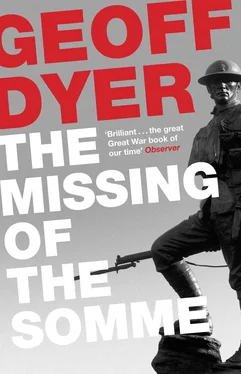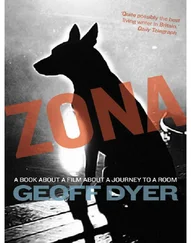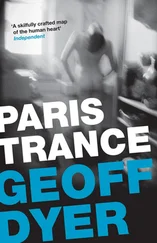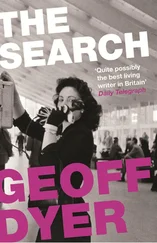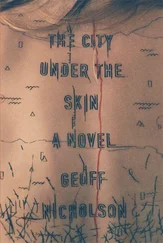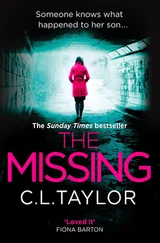Rosenberg, Issac ref1
Rouad, Jean
Fields of Glory ref1, ref2, ref3
Royal Academy, The ref1n
Royal Artillery Memorial (Jagger) ref1
Sagar, Keith ref1
Sandburg, Carl
‘Grass’ ref1
Sandle, Michael
A Twentieth-Century Memorial ref1
Sargent, John Singer
Gassed ref1, ref2
Sassoon, Siegfried ref1, ref2, ref3, ref4, ref5, ref6, ref7, ref8, ref9, ref10, ref11, ref12, ref13, ref14, ref15, ref16, ref17, ref18, ref19, ref20, ref21, ref22, ref23, ref24
‘Aftermath’ ref1
The Complete Memoirs of George Sherston ref1
Counter-Attack ref1
‘Dreamers’ ref1
Memoirs of a Fox-Hunting Man ref1n
Memoirs of an Infantry Officer ref1n
‘On Passing the New Menin Officer’ ref1
‘The Road to Ruin’ ref1
‘An Unveiling’ ref1
Scannell, Vernon ref1
‘The Great War’ ref1, ref2
‘Walking Wounded’ ref1
Scarry, Elaine ref1
Scott, Kathleen ref1
Scott, Robert Falcon ref1
Shelley, Percy B. ref1
Simpson, Louis ref1
Sorley, Charles ref1
Speer, Albert ref1
Spender, Stephen ref1
Stallworthy, Jon ref1, ref2, ref3n
Tagore, Rabindranath ref1
Tavernier, Bertrand
Life and Nothing But ref1n, ref2n, ref3
Taylor, A.J.P ref1, ref2
Terraine, John ref1
Toft, Albert ref1
Holborn Memorial ref1
Tonks, Henry ref1
Toynbee, Philip ref1, ref2
Two Minutes’ Silence ref1, ref2, ref3, ref4
Unknown Warrior (or Soldier) ref1, ref2, ref3, ref4, ref5, ref6
Updike, John ref1
Vimy Ridge Memorial (Allward) ref1, ref2
Viney, Nigel
Images of Wartime ref1
Ware, Fabian ref1
Williamson, Henry ref1, ref2, ref3, ref4
Wilson, Edward ref1
Wilson, Trevor
The Myriad Faces of War ref1
Winter, Denis ref1, ref2
Death’s Men ref1, ref2
Wolff, Leon
In Flanders Fields ref1, ref2, ref3
Wordsworth, William ref1
World at War, The (TV series) ref1
Yeats, W.B.
The Oxford Book of Modern Verse ref1
Young, James E. ref1, ref2
Zadkine, Ossip
Monument to Rotterdam ref1
Goudy Old Style was designed by Frederic W. Goudy, an American type designer, in 1915. It is a graceful, slightly eccentric typeface, and is prized by book designers for its elegance and readability.
Inspired by William Morris’ Arts and Crafts movement, Frederic Goudy designed over ninety typefaces throughout his career, and is one of the most influential type designers of the twentieth century.
1. As early as 1915 the Church Crafts League was making ‘a special effort to direct the pious intentions of bereaved relatives into the proper channels’. On 8 January 1916 the Civic Arts Association held a conference on how best to ensure that the dead were suitably remembered. Six months later the same association organized ‘An Exhibition of Designs for War Memorials’. In the same year the Royal Academy set up a committee of influential architects and sculptors to offer guidance on the aesthetics of remembrance. The following June various public bodies met at the Royal Academy ‘to secure combined instead of isolated efforts in erecting memorials and to protect churches and public buildings from unsuitable treatment in setting up monuments of the war’.
2. Until 1917 the Imperial War Graves Commission was known as the Graves Registration Commission; in 1960 it became the Commonwealth War Graves Commission.
3. Bertrand’s words are echoed by those of an actual French soldier, Sergeant Marc Boassoan, who wrote to his wife in a letter of July 1916: ‘What kind of a nation will they make of us tomorrow, these exhausted creatures, emptied of blood, emptied of thought, crushed by superhuman fatigue?’
4. The anaesthetized solemnity of this process of selection is savagely undermined by John Dos Passos in Nineteen Nineteen , the second volume of his USA trilogy:
In the tarpaper morgue at Châlons-sur-Marne in the reek of chloride of lime and the dead, they picked out the pine box that held all that was left of
enie menie minie moe plenty other pine boxes stacked up there containing what they’d scraped up of Richard Roe
and other person or persons unknown. Only one can go. How did they pick John Doe?
Make sure he ain’t a dinge, boys.
make sure he ain’t a guinea or a kike,
how can you tell a guy’s a hundredpercent when all you’ve got’s a gunnysack full of bones, bronze buttons stamped with the screaming eagle and a pair of roll puttees?
. . and the gagging chloride and the puky dirtstench of the yearold dead. .
5. Bertrand Tavernier’s Life and Nothing But ends with Major Dellaplane’s (Philippe Noiret) calculation that it would take the French dead eleven days and nights to march up the Champs-Elysées to the Arc de Triomphe.
6. This scrupulous recording of the dead was due both to the unprecedented scale of loss and to the fact that those who died, whether volunteers or conscripts, were, for the most part, citizen-soldiers. The principle of honouring the war dead individually can be traced back to the French Revolution and the dawn of the citizen-army — but it was not until the Great War that the dead were comprehensively commemorated. Although there were exceptions, the common soldier before 1914 was, in George Mosse’s words, ‘treated as part of an anonymous collectivity’. The Great War was the first to give equal honour to all the dead, officers and men alike.
7. inter alia: 1926: Herbert Read, In Retreat ; 1928: Edmund Bunden, Undertones of War ; Siegfried Sassoon, Memoirs of a Fox-Hunting Man ; E. E. Cummings, The Enormous Room ; Erich Maria Remarque, All Quiet on the Western Front ; Richard Aldington, Death of a Hero ; Robert Graves, Goodbye to All That ; Ernest Hemingway, A Farewell to Arms ; Ernst Junger, Storm of Steel ; 1930: Sassoon, Memoirs of an Infantry Officer ; Frederic Manning, Her Privates We .
8. In the course of writing the review of Stallworthy’s biography from which both these quotations are taken, Larkin took the opportunity, in a letter, to offer a succinct opinion of the much more detailed picture of Owen we now have: ‘W. O. seems rather a prick, really, yet the poems stay good. A brave prick, of course. You wouldn’t catch me waving a revolver at 30 Germans and getting the M C thereby. But not the sort of poetic Angel of Mons (Somme rather) of legend.’
9. This contrasts sharply with the American Civil War; T. H. O’Sullivan’s 1863 photograph, ‘A Harvest of Death’, for example, showed the fields of Gettysburg strewn with dead.
10. In an early visit to the Imperial War Museum photographic department I began to suspect that this ‘cover-up’ was continuing into the present day. Photos from the Great War are catalogued by subject and, despite extensive filings under ‘Destruction’, there was no classification for ‘Dead’ or ‘Injured’ or any other heading I could think of. By chance I came across a photo of a dead soldier. Beneath it was typed, ‘Transferred to Casualty Album’. In red handwriting another note read: ‘Not for sale or reproduction’. Having established the correct generic term I moved back to the subject catalogues, but — as I thought — there was no Casualty Album. Feeling certain that I had stumbled upon a classic example of the missing-file conspiracy I explained to one of the assistants, in tones of baffled innocence, that I couldn’t seem to find the so-called Casualty Album.
Читать дальше
